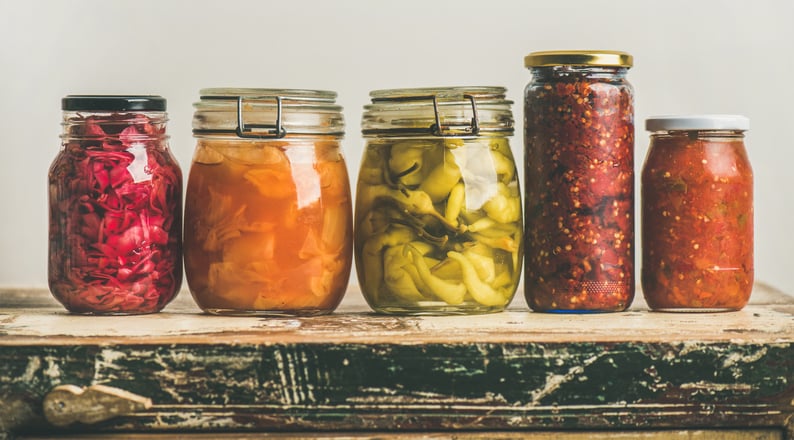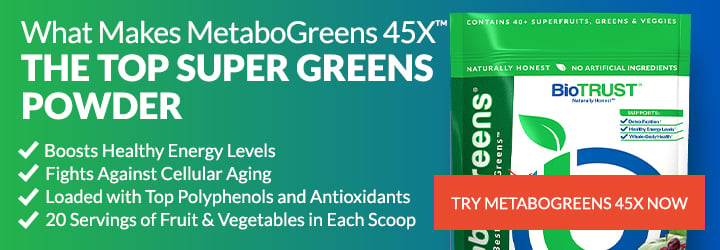3 of the Best Processed Foods For You (nutritionist approved)

You’ve probably heard on more than one occasion that you shouldn’t eat a lot of processed foods, if any at all. In fact, as we mentioned in our Clean Eating Beginner’s Guide, the typical Western-style diet, which is composed of more than 70% processed foods, is tied to all sorts of health risks and problems characterized by excessive oxidative stress and unhealthy levels of inflammation—negatively affecting your heart, brain, waistline, and virtually every tissue and organ in your body while accelerating aging.
So, with processed foods being given a bad rap, why would anyone, especially a nutritionist, suggest including them in a healthy diet? I suppose this would all depend on how you define “processed.”
You see, there’s not a single food, nutrient, etc., that causes obesity, unhealthy outcomes, etc. In other words, there are certain good processed foods that can be consumed as part of an overall healthy diet.
In fact, I think there’s a trend in the research community to further delineate “unhealthy” processed foods from “healthier” ones by creating a separate category called “ultra-processed foods.” These are the types of foods you and I tend to think of when we say “processed.” They’re the “convenient, highly processed foods from cheap agricultural inputs that often contain high amounts of salt, sugar, fat, and flavor additives and are engineered to have supernormal appetitive properties driving increased consumption.”
3 Good Processed Food Options
1. Protein Supplements
I would argue that protein supplements such as BioTrust Low Carb, BioTrust Harvest, and BioTrust Platinum1 are solid choices for healthy meal replacements, despite being good processed foods.
Typically, most protein supplements are processed using high-heat acidifying methods. These methods make for putrid proteins that are no longer in their natural biological state and further inhibit digestion and absorption. BioTrust Nutrition only uses cold-temperature, natural microfiltration techniques that leave all of our proteins in the natural, most biologically active states—whey protein isolate included—to ensure the highest quality and deliverability possible.
Take our Low Carb Protein Blend for example. It really does stand head and shoulders above other protein supplements on the market in my opinion.
- It’s made with natural ingredients and contains no artificial colors, flavors, or preservatives.
- It’s naturally sweetened with Stevia and contains no artificial sweeteners.
- It’s Certified Hormone Free and is sourced from cows not treated with dangerous growth hormones like rBST and rBGH that can pass into your body.
- It’s a good source of fiber.
- It’s a true time-released blend of 4 proteins that provide your body with sustained nutrition for up to 8 hours (without the insulin spike of whey-protein-only products).
- It’s cold-processed, so the proteins aren’t damaged and remain fully intact.
- It’s the only protein product to contain Prohydrolase, a breakthrough new enzyme blend that ensures 99% of the protein you ingest gets absorbed (without Prohydrolase, most protein supplements leave you absorbing only half the protein…that’s a WASTE of half the nutrition you’re putting in your body…but you still get all the calories!).
2. Frozen Fruits and Vegetables
Frozen fruit and vegetables are generally picked at peak ripeness. They are often washed, blanched, frozen, and packaged within a few hours of being harvested.
What does this mean for you, the consumer? It means these fruits and vegetables are picked when they are at their most nutritious states. And in most cases, no chemicals are added during this process.
This does not mean I still would not opt for fresh fruits and vegetables when possible. However, in some areas and climates, and depending on seasonality, this isn’t always feasible.
There will always be a possibility of vitamins and nutrients decreasing in fruits and vegetables. Yet when reported in frozen produce, they’re generally small. On the other hand, shortly after harvesting, fresh fruits and vegetables start to lose moisture, have a greater risk of spoiling, and drop in nutrient value.
Bottom line: frozen fruits and vegetables are a convenient and cost-effective alternative to fresh options. They are definitely on the list of good processed foods.
3. Fermented Foods
The process of fermentation was one of the first ways humans processed foods to prevent them from spoiling. Fermentation is arguably the healthiest means to process foods and uses the least amount of processing, despite being lumped into the “franken-food” category of processed foods.
In fact, a recent review of the available research on fermented foods found that these good processed foods can help with everything from diabetes to osteoporosis. Fermented foods include an array of probiotics—including strains from the Lactobacillus, Streptococcus, Enterococcus, Lactococcus, Bifidobacterium, and Saccharomyces families—which aid in digestion and nutrient absorption.
A group of international scientists led by researchers from the University of Nebraska-Lincoln delved deep into the research on fermented foods and determined they do live up to all the health hype they’ve received in recent years. As an example, some of the studies they reviewed showed that:
- Yogurt lowers diabetes rates.
- Chungkookjang (a Korean fermented soybean paste) reduces obesity risk.
- Kimchi (a Korean form of pickle) lowers diabetes rates.
- Soy sauce, miso, and other fermented soy products are connected to lower heart disease rates.
- Yogurt, cheese, and other fermented foods reduce moodiness and irritability.
- Drinking coffee (yes, your coffee is most likely fermented) reduces the risk of depression.
- Fermented foods help blood pressure, cholesterol, osteoporosis, and digestion.
Are Good Processed Foods Right For You?
When deciding whether or not processed food should be included in your healthy diet, I would echo the recommendations from the American Heart Association:
- Choose healthier/ good processed foods.
- Seek healthier alternatives to some highly processed foods.
- Cook more meals at home.
- Swap highly processed foods with less processed options.
- Try fruits and vegetables from the produce aisle, the farmer’s market, or your own garden.
- Watch out for sneaky sodium.
- Take your food into your own hands.
Also, ask yourself the following questions:
- How nutritious is the food that’s being processed? Are we starting with nutrient-dense foods like fruits and vegetables or are we processing relatively nutrient-poor foods like wheat and sugar cane?
- What is being removed? Are you processing grains, removing the most nutritious parts of the plant and leaving little to no nutrition? Or are you removing potential impurities and pathogens?
- What is being added? As mentioned earlier, fermented foods can provide healthy bacteria, whereas some other forms of processing foods include unhealthy things like sugar, artificial colors, flavors, and
- Why are we processing it? Are we processing foods to extend shelf life, or to improve our health and wellness? Or are we processing ingredients to create foods that we would be better off without?
preservatives.








